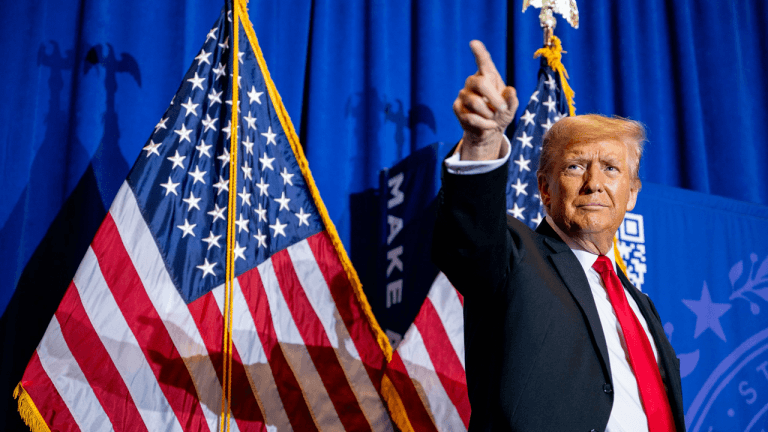
Bitcoin price continues to press higher this week as demand for stablecoins and a key BTC price metric suggests bulls have a “healthy appetite.”
Bitcoin (BTC) rallied 11% between Jan. 20 and Jan. 21, reaching the $23,000 level and shattering bears' expectations for a pullback to $20,000. Even more notable is the move brought demand from Asia-based retail investors, according to data from a key stablecoin premium indicator.
Traders should note that the tech-heavy Nasdaq 100 index also gained 5.1% between Jan. 20 and Jan. 23, fueled by investors' hope in China reopening for business after its COVID-19 lockdowns and weaker-than-expected economic data in the U.S. and the Eurozone.
Another bit of bullish information came on Jan. 20 after U.S. Federal Reserve Governor Christopher Waller reinforced the market expectation of a 25 basis point interest rate increase in February. A handful of heavyweight companies are expected to report their latest quarterly earnings this week to complete the puzzle, including Microsoft, IBM, Visa, Tesla and Mastercard.
In essence, the central bank is aiming for a “close landing,“ or a controlled decline of the economy, with fewer job openings and less inflation. However, if companies struggle with their balance sheets due to the increased cost of capital, earnings tend to nosedive and ultimately layoffs will be much higher than anticipated.
On Jan. 23, on-chain analytics firm Glassnode pointed out that long-term Bitcoin investors held losing positions for over a year, so those are likely more resilient to future adverse price movements.
Let's look at derivatives metrics to better understand how professional traders are positioned in the current market conditions.
The Asia-based stablecoin premium nears the FOMO area
The USD Coin (USDC) premium is a good gauge of China-based crypto retail trader demand. It measures the difference between China-based peer-to-peer trades and the United States dollar.
Excessive buying demand tends to pressure the indicator above fair value at 103%, and during bearish markets, the stablecoin's market offer is flooded, causing a 4% or higher discount.

Currently, the USDC premium stands at 103.5%, up from 98.7% on Jan. 19, signaling higher demand for stablecoin buying from Asian investors. The movement coincided with Bitcoin's 11% daily gain on Jan. 20 and indicates moderate FOMO by retail traders as BTC price approached $23,000.
Pro traders are not particularly excited after the recent gain
The long-to-short metric excludes externalities that might have solely impacted the stablecoin market. It also gathers data from exchange clients' positions on the spot, perpetual, and quarterly futures contracts, thus offering better information on how professional traders are positioned.
There are occasional methodological discrepancies between different exchanges, so readers should monitor changes instead of absolute figures.

The first trend one can spot is Huobi and Binance's top traders being extremely skeptical of the recent rally. Those whales and market makers did not change their long-to-short levels over the last week, meaning they are not confident about buying above $20,500, but they are unwilling to open short (bear) positions.
Interestingly, top traders at OKX reduced their net longs (bull) until Jan. 20 but drastically changed their positions during the latest phase of the bull run. Looking at a longer 3-week time frame, their current 1.05 long-to-short ratio remains lower than the 1.18 seen on Jan. 7.
Related: Bitcoin miners’ worst days may have passed, but a few key hurdles remain
Bears are shy, providing an excellent opportunity for bull runs
The 3.5% stablecoin premium in Asia indicates a higher appetite from retail traders. Additionally, the top traders' long-to-short indicator shows no demand increase from shorts even as Bitcoin reached its highest level since August.
Furthermore, the $335 million liquidation in short (bear) BTC futures contracts between Jan. 19 and Jan. 20 signals that sellers continue to use excessive leverage, setting up the perfect storm for another leg of the bull run.
Unfortunately, Bitcoin price continues to be heavily dependent on the performance of stock markets. Considering how resilient BTC has been during the uncertainties regarding the bankruptcy of Digital Currency Group's Genesis Capital, the odds favor a rally toward $24,000 or $25,000.
The views, thoughts and opinions expressed here are the authors’ alone and do not necessarily reflect or represent the views and opinions of Cointelegraph.
This article does not contain investment advice or recommendations. Every investment and trading move involves risk, and readers should conduct their own research when making a decision.



























